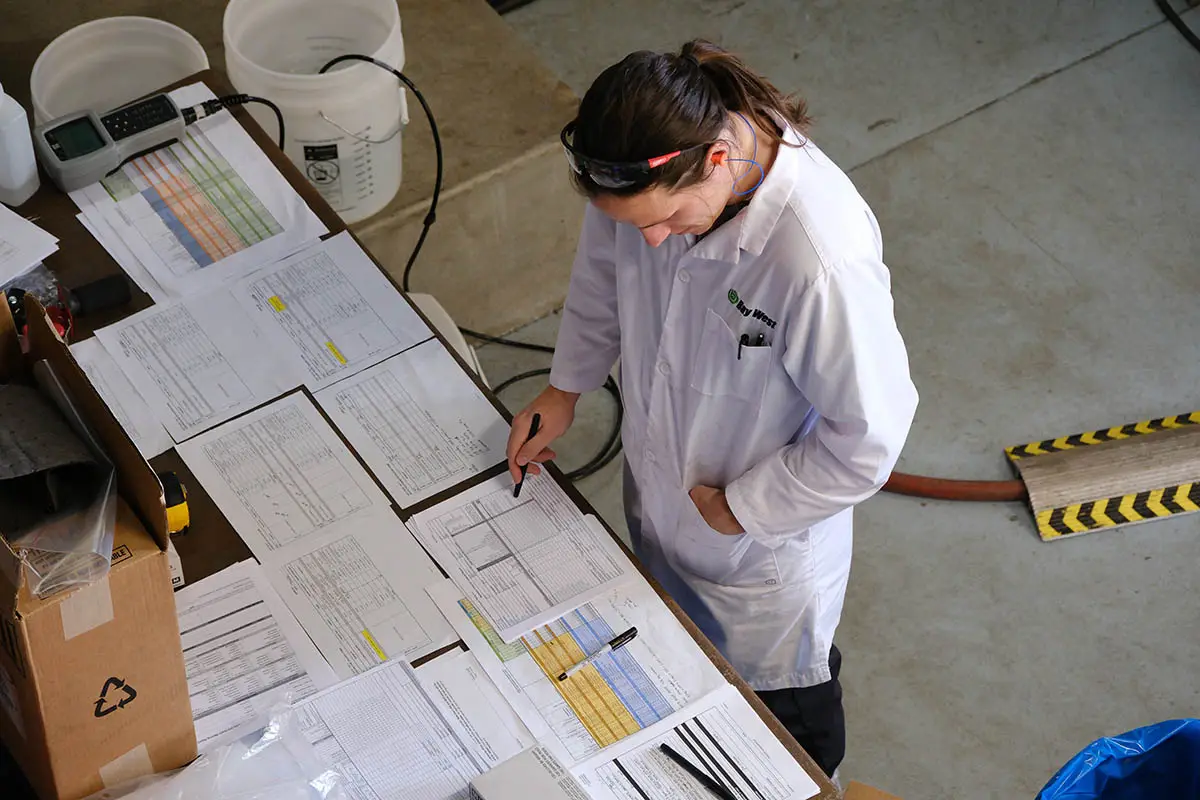Bay West is actively researching the effectiveness of supercritical water oxidation (SCWO) as a solution to the complex challenge of not just treating, but destroying per- and polyfluoroalkyl substances (PFAS), commonly known as “forever chemicals” due to their very strong chemical bonds. The destruction of PFAS ensures the waste from other treatment processes cannot re-contaminate soil and groundwater. Bay West selected General Atomics’ (GA) Industrial Supercritical Water Oxidation (iSCWO) for researching the destruction of PFAS and recently tested the destruction of surface active foam fractionation (SAFF)-concentrated PFAS waste provided by the Minnesota Pollution Control Agency (MPCA).

GA’s San Diego site has been the long-held testing location for their iSCWO system.
Through a grant program, the MPCA provided Bay West with five gallons of SAFF concentrate to demonstrate the PFAS destruction capabilities of SCWO. In October 2023, this SAFF was processed through a proprietary ISCWO reactor at GA in San Diego, California. During the test, the reactor demonstrated up to a 99.94% reduction in PFAS mass. Destruction efficiency through the reactor appears to increase with increasing waste stream concentrations. The test was a complete success that demonstrated the potential use of iSCWO for the destruction of SAFF.
SCWO is an evolving yet well-documented technology that utilizes an aqueous waste stream in a supercritical state (above 374°C and 218 atmospheres) combined with an oxidant to achieve rapid and complete oxidation of all organics to carbon dioxide, clean water, and inorganic salts.
GA’s full-scale iSCWO system has been used and proven in industry and the field for over 10 years for the destruction of numerous recalcitrant contaminants.
The waste stream used for the PFAS destruction demonstration was the five gallons of SAFF provided by MPCA. Due to the limited volume of SAFF available and the time needed to complete the planned testing, 2.5 gallons of SAFF was diluted to a total mixture volume of 181.6 gallons. During the second testing phase, the additional 2.5 gallons of SAFF material was fed directly into the influent stream of the remainder of the first mixture. Sampling was conducted at several points throughout the iSCWO system, including diluted process influent, quench water, process effluent, condensate, ambient air, and effluent air. The process was also evaluated in terms of energy use, fuel use, and water use.

Bay West staff on-site testing the effectiveness of SCWO for the destruction of PFAS.
Due to the limited volume of SAFF concentrate available for testing and the time needed to complete the planned testing, dilution of the SAFF concentrate was required during each of the testing phases to meet the minimum system flow rate of 1 gallon per minute. The costs associated with the treatment of this waste stream are therefore higher on a per-unit mass destroyed basis due to the additional energy required to bring the total feed volume to supercritical conditions. For full-scale treatment conditions with a greater available volume of undiluted feed material, treatment costs per unit mass of PFAS destroyed are expected to decrease and therefore become more economical. Due to this uncertainty, utility and resource costs for this study were calculated on a per-hour basis and then multiplied across the total test time to determine the total treatment cost.
The research will continue with other forms of PFAS waste, including aqueous film forming foam, brine from reverse osmosis treatment systems, resin beads, and other waste types. Additionally, the research will deploy a full-scale system to the field to evaluate the destruction technology in real world conditions and to better understand costs and infrastructure needs for a successful deployment of this technology.
Access additional information about this PFAS destruction project and the technology behind it. These PDFs include key details about the treatment process, environmental goals, and site-specific objectives.